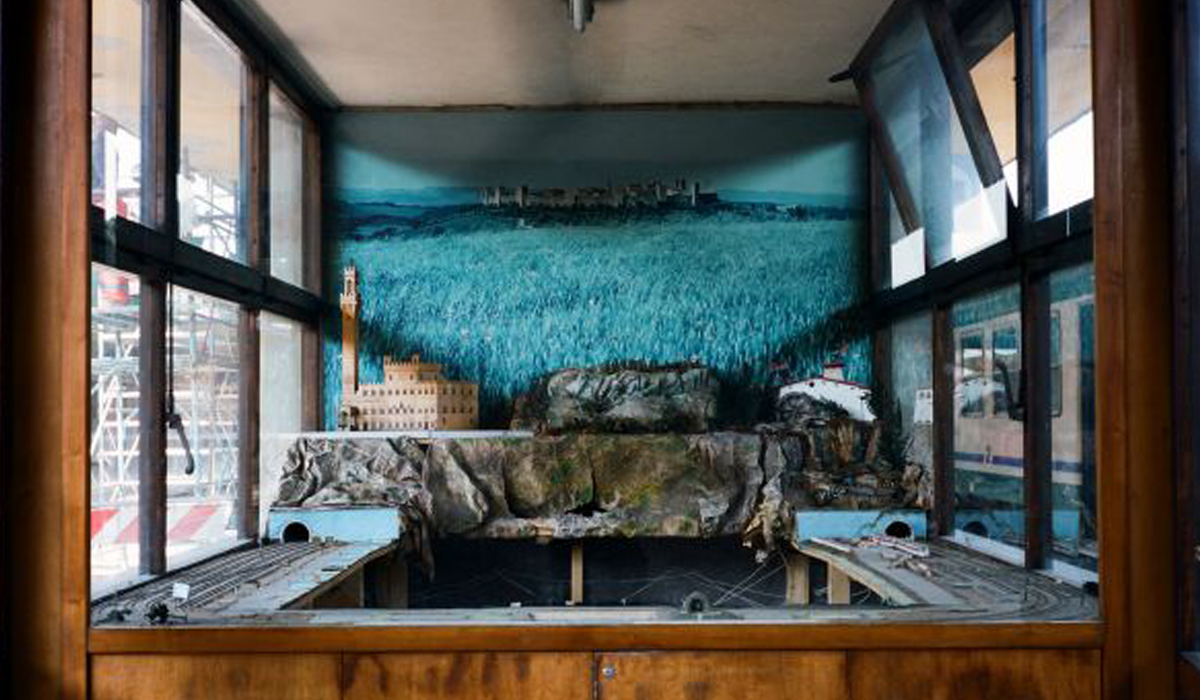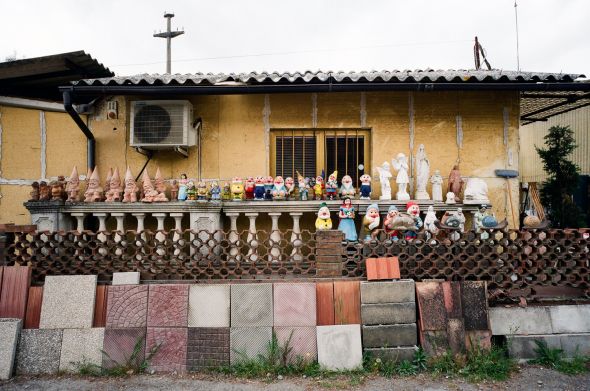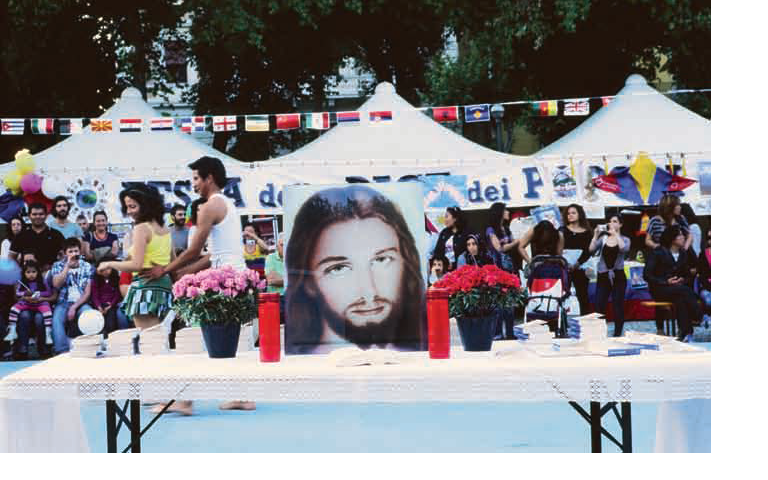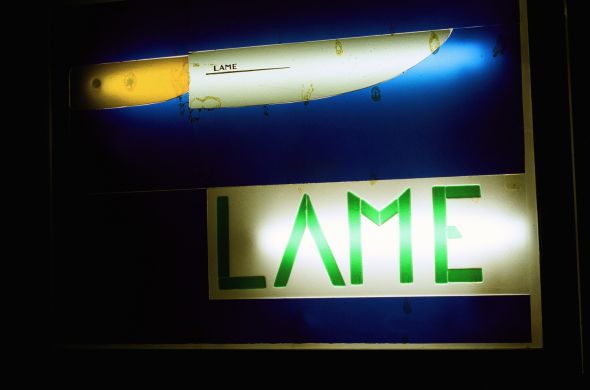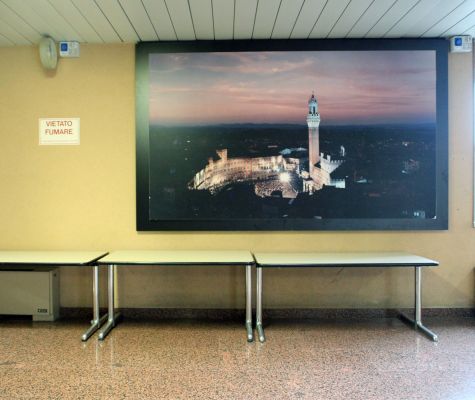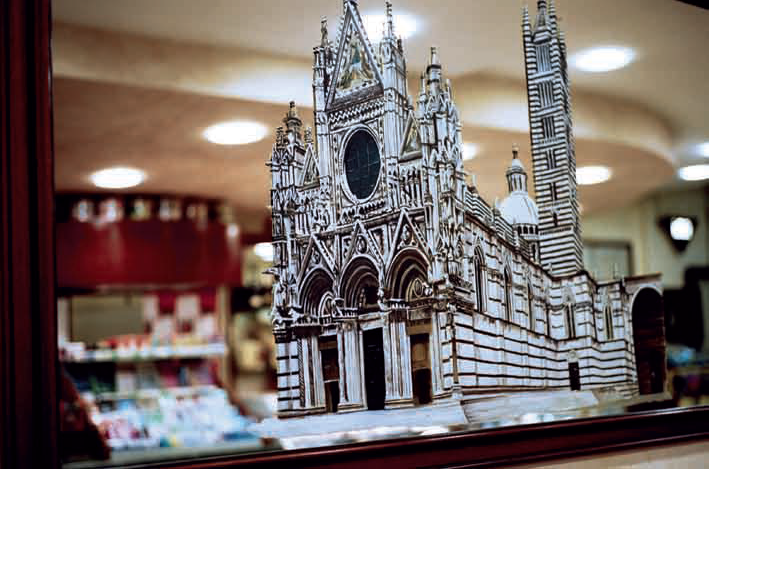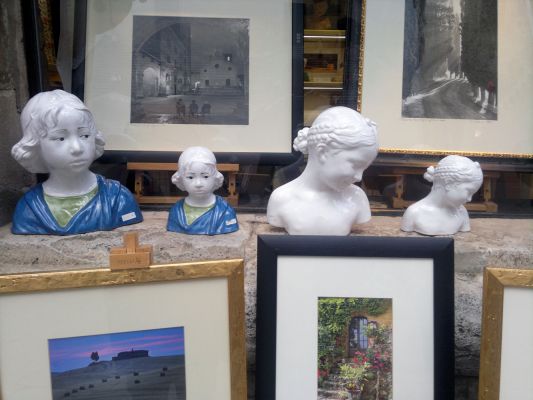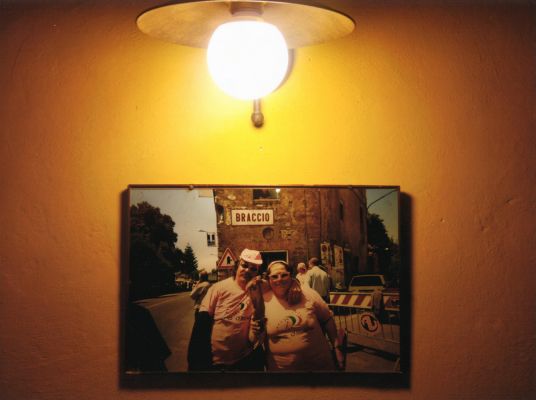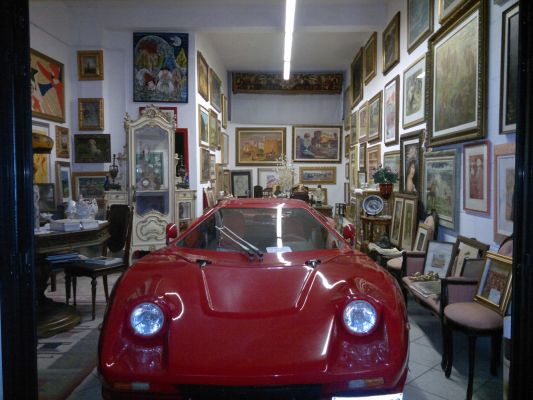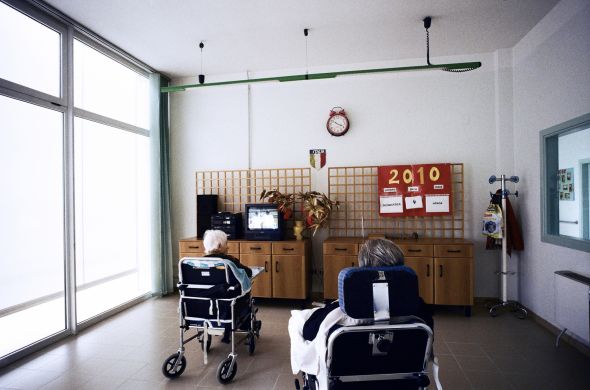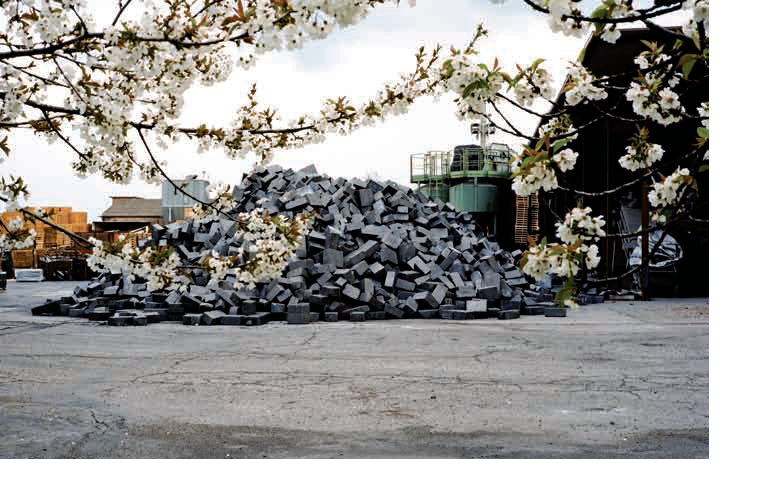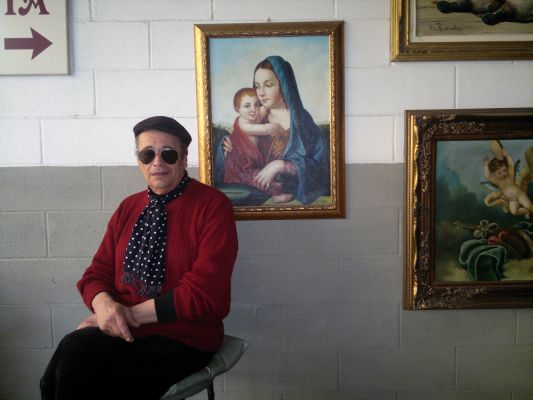Immagini discrete, non parlano ed inducono al silenzio. Immagini vuote, trattengono l’indefinito.
Immagini spaesanti, conservano una realtà talmente estrema da sembrare inespressiva.
Abbiamo a che fare con un artista asettico?
Siamo piuttosto di fronte ad un’energia inanimata anche detta atarassia.
Quelle di Federico Pacini, giovane artista senese, sono foto imperturbabili ma non impenetrabili.
Lui non costringe all’attenzione, bensì stimola l’intorpidito giudizio dello spettatore servendosi di un’autenticità che trascende la schiettezza.
Abbiamo capito tutto ciò, attraverso la nostra intervista che ci ha permesso di conoscerlo meglio.
Hai iniziato studiando scienze politiche. Cosa ti ha spinto a buttarti sulla fotografia? È una passione che hai da sempre o è sorta con il tempo?
Prima di studiare Scienze Politiche ho praticato l’attività di disc jockey che mi ha fatto relazionare fin da tenera età in ambiti con molte persone dove il lavoro mi muoveva verso una connessione con il pubblico in maniera attiva.
Scienze Politiche è stato un passaggio al fine di studiare in particolare le dinamiche politiche e sociali che ci mettono in relazione. La fotografia è arrivata in un periodo in cui avevo bisogno di alcune risposte personali e ci sono state: mi ha aiutato a capire alcune cose della mia vita in relazione specialmente al passato. La fotografia è un emblema di com’è la società quindi la vita si specchia attraverso di essa.
Puoi spiegare il tuo modo di concepire la fotografia? Cosa sono per te le tue foto? Cosa vuoi che significhino per gli altri?
Come ho anticipato alla fine della prima domanda per me la fotografia si colloca come strumento di legittimazione della società. Agli altri spero che le mie fotografie aiutino ad alimentare il proprio punto di vista.
Preferisci fotografare persone, spazi chiusi o spazi aperti? Perché?
Non ho preferenze.
Così come nelle foto in cui rappresenti esclusivamente gli spazi, anche nelle foto che scatti alle persone emerge un’energia inanimata. Le tue figure, al posto di essere protagoniste, diventano in secondo piano più dello stesso sfondo. Un background che può sembrare asettico come i soggetti ad esso abbinato, in realtà non è altro che atarassia. Perché questa ricerca dell’espressività nell’asetticità? Centra qualcosa la tua tesi “From Dachau to Auschwitz: Nazi policy developments in the management of concentration camps” con la scelta frequente di spazi abbandonati?
Mi piace che utilizzi il termine “atarassia”, lo condivido. Al di là della rappresentazione iconica che si possa creare attraverso il linguaggio per me è importante lo stato d’essere che si genera nell’osservatore.
Apparentemente niente ma se ci rifletto un po’ mi sovviene il concetto di potere, evidente nei campi di concentramento e nell’evoluzione degli stessi dove i tedeschi non si curavano direttamente degli internati ma crearono una scala gerarchica in cui la tipologia di prigioniero ritenuto superiore controllava la classe inferiore. Il concetto di potere è un aspetto che a volte cerco di analizzare nella mia ricerca fotografica.
Un titolo che colpisce è quello del tuo libro fotografico “Purtroppo ti amo”, edito da Quinlan Editrice. Un testo in cui hai scelto di raccontare il rapporto con la tua città, Siena, attraverso immagini che trascendono gli stereotipi comuni. Puoi spiegare questa tua idea?
La mia idea di base è quella di spostare l’attenzione concentrica (se vogliamo potere visivo abituale e retorico) di una città da “Cartolina” come Siena verso la periferia non solo fisica ma mentale.
Anche con questo lavoro hai cercato di mettere in primo piano aspetti che solitamente sono posti in secondo piano. Il risultato è stato la denuncia della depressione di una città o il ritratto della sua autenticità?
Mi piace pensare di aver cercato un’autenticità: è ciò che mi interessa.
Una città che purtroppo ami anche nei suoi difetti, una città della quale tutti sono abituati a vedere solo il profilo migliore. Un po’ come la nostra Roma che, come emerge dal film di Paolo Sorrentino “la grande Bellezza” è talmente immersa nello splendore da risaltare più dello squallore presente. Non trovi?
Che ci sia squallore o splendore non mi interessa, spesso fatico a distinguere queste due parole. Tutto si svela in un’autenticità.
Come mai per realizzare questo tuo lavoro hai spesso cambiato strumento di ripresa? Sei passato dalla Leica alla Canon per arrivare addirittura a scattare con il cellulare. Perché?
Cambiare strumento di ripresa porta a concentrare l’osservatore sul punto di vista.
A quando la tua prossima mostra-lavoro?
Ho progetti in cantiere in diverse zone italiane e fuori nazione legate al libro “Purtroppo ti amo”. Inoltre a breve esporrò una serie di fotografie inedite realizzate all’interno del Santa Maria della Scala di Siena (fulcro museale della città di Siena) presso il medesimo luogo.
The WalkMan si propone di mettere in luce giovani talenti nel contesto italiano: cosa consiglieresti a chi, come te, ha deciso di investire la propria vita nella sua creatività?
Consiglio di esprimere nel proprio lavoro una necessità interiore.
[divider]ENGLISH VERSION[/divider]
Discreet images. Speechless images leading to silence. Empty images holding the indefinite. Bewildering images, retaining a reality so extreme that seems expressionless.
Are we dealing with an aseptic artist? We are rather facing with an inanimate energy also known as even ataraxia.
Federico Pacini’s photos are unperturbed but not impenetrable. The young Sienese artist does not force the attention, but stimulates the viewer’s numbing judgment using an authenticity that transcends the frankness.
We understood it, through this interviews that allowed us to know him better.
You had been studying Political Science. What pushed you toward photography? Is it a passion that you have always felt or it arisen with time? Before studying Political Science, I was a disc jockey and it put me to look for a connection with the audience in an active way. Politic Science has been a shift in order to study the political and social dynamics that relate people. Photography came when I needed some answers: it helped me to understand some things in my life, especially in relation to the past. Photography is an emblem of how society is, thus life is reflected through it.
Can you explain your way of thinking about photography? What do your photos represent for you? What do you expect they mean for other people? As I mentioned at the end of the previous question, to me photography is a tool to legitimize society. I hope my photos might help other people to feed their own point of view.
Do you prefer to photograph people, enclosed spaces or open spaces? Why? I have no preferences.
As well as in photographs in which you only represent spaces, even in the photos you take of people it emerges an inanimate energy. Your figures, instead of being protagonists in the background, move to the background more than the same background. A background that may seem aseptic as the subjects it combines, actually is nothing more than ataraxia. Why this research of expressiveness in what is aseptic? Is this somehow related to your thesis “From Dachau to Auschwitz: Nazi policy developments in the management of concentration camps” with the frequent choice of abandoned spaces? I like you use the term “ataraxia”, I agree with you. Beyond the iconic representation that we can create through language, to me it is important the state of being generating in the observer. Apparently there is no connection, but if I reflect a little, I remember the concept of power, which was evident in the concentration camps and in their evolution, where Germans did not care directly about the internees but created a hierarchy in which the type of prisoner considered superior controlled the lower class. The concept of power is something that sometimes I try to analyze in my photographic research.
Your photo book has a striking title “Purtroppo ti amo”, Quinlan Editrice. In this text you chose to tell the relationship with your city, Siena, through images that transcend common stereotypes. Can you explain this idea? The basic idea is to shift the focus (or usual visual power and rhetorical power) from a “Postcard” city as Siena to other Italian peripheries, not only the physical but also the mental ones.
With this work you have tried to put the spotlight on issues that are usually located on the background. Was the result the complaint of the depression of a city or a portrait of its authenticity? I like to think I found authenticity; this is what interests to me.
It is a city that you love with its defects; a city of which everyone is used to seeing only the best profile. It is like Rome that, as is clear from Paolo Sorrentino ‘s “The Great Beauty”, is so immersed in the splendor that stands out more of its squalor, don’t you think? I don’t care about splendor or squalor. I often struggle to distinguish between these two words. All is revealed in authenticity.
In order to do this job, why have you often changed the tool to shot? You used a Leica, a Canon and even your mobile. Why? Changing tool brings to focus the viewer on the views.
When will be your next show-work? I have several projects in Italy and abroad related to the book “Purtroppo ti amo”. Moreover, soon I will present a series of unpublished photos taken inside Santa Maria della Scala in Siena (a fulcrum of the city of Siena).
The WalkMan Magazine aims to highlight young talents in the Italian context: what would you recommend to those who, like you, have decided to invest their life in creativity? I suggest them to express an inner necessity in their works.
Traduzione a cura di Daniela De Angelis

